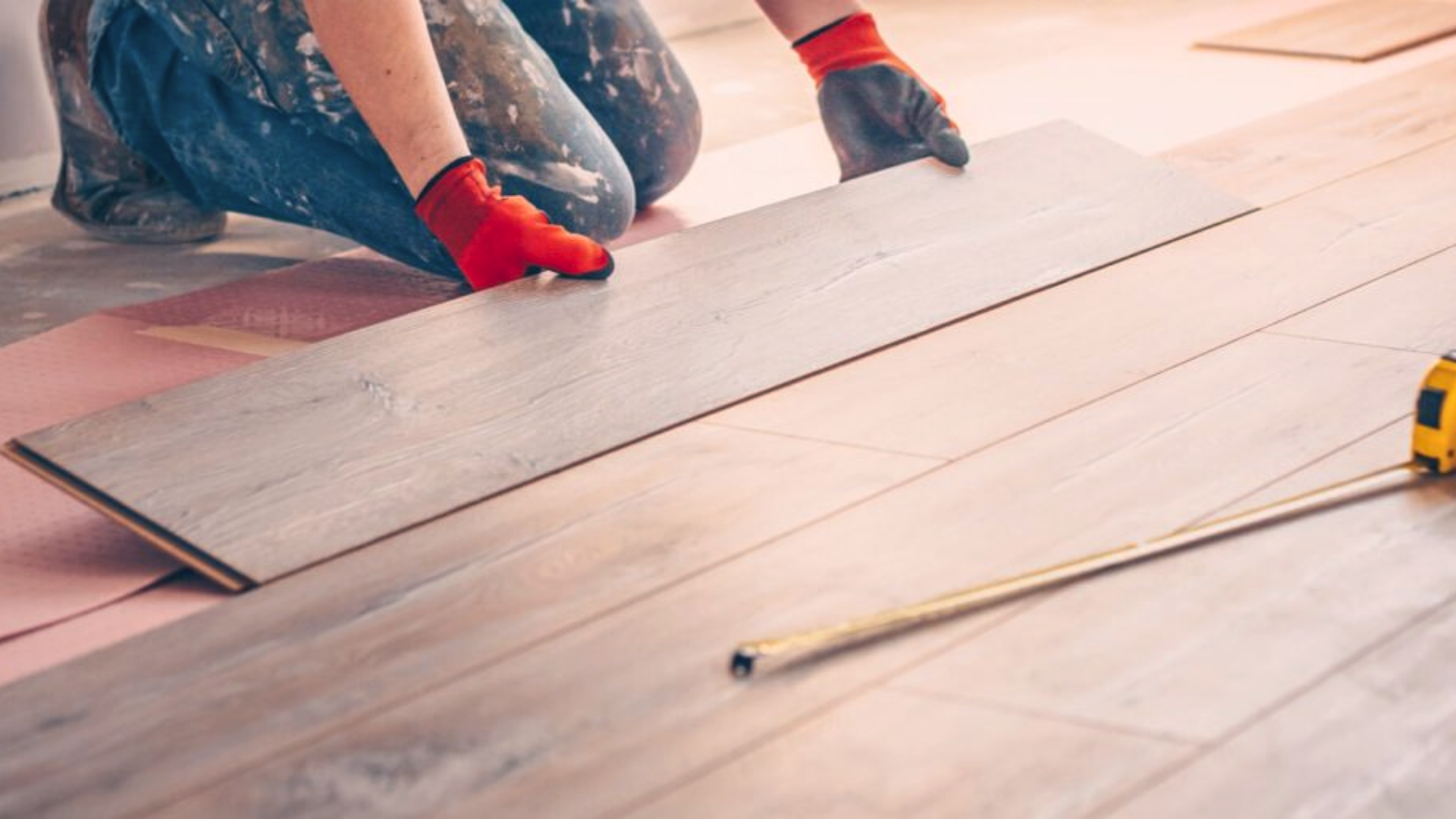Thinking about wood floors for your home? You’re not alone. Many homeowners pick wood flooring for its good looks and long life.
Wood floors bring warmth and comfort to any room, and they’ve been a top choice in homes for hundreds of years.
Wood flooring is made from timber that’s cut and finished to create flat pieces that fit together on your floor.
It comes in many types, colors, and finishes to match different homes and tastes.
In this blog, you’ll learn:
- The real benefits of wood flooring
- The drawbacks you should know before buying
- How wood floors stack up against other options
- Tips to help you decide if wood flooring is right for your home
Remember, there’s no “one-size-fits-all” when it comes to floors. The best choice depends on your home, budget, and how you live.
My guide will help you make a smart choice that works for your needs.
Pros of Hardwood Flooring

1. Natural Beauty that Never Goes out Of Style
Wood floors bring a warm, natural look to any home. I’ve seen homes with 100-year-old floors that still look beautiful today.
The grain patterns in each board are one-of-a-kind, giving your home a unique touch. As wood ages, it takes on a rich character that many people find appealing.
Unlike many trends that come and go, wood floors have stayed popular for centuries.
2. Boosts Home Value
When I talk to real estate agents, they often tell me that homes with wood floors sell faster and for more money.
Many home buyers will pay extra for a house with wood flooring already in place. Wood floors are seen as an upgrade that makes your entire home feel more high-end.
If you might sell your home in the future, wood floors could be a smart choice for your wallet.
3. Long-Lasting with Proper Care
With good care, wood floors can last for generations. I know families who have had the same wood floors for 50+ years!
While carpet might need replacing every 10 years, a well-made wood floor can serve you for much longer.
This makes them a good long-term choice despite the higher upfront cost.
4. Low on Allergens
Do you or your family members have allergies? Wood floors might help.
Unlike carpet, wood doesn’t trap dust, pollen, pet hair, or other things that make you sneeze.
You can wipe wood floors clean, removing allergens instead of just hiding them. This makes wood a top pick for cleaner indoor air and fewer allergy problems.
5. Refinishable Instead of Replaceable
One of my favorite things about wood floors is that you can make them look new again without tearing them out.
When they get scratched or worn, you can sand them down and add a fresh coat of stain or finish.
This gives you a like-new floor for less money than a full replacement. You can even change the color if you want a new look!
Cons of Hardwood Flooring
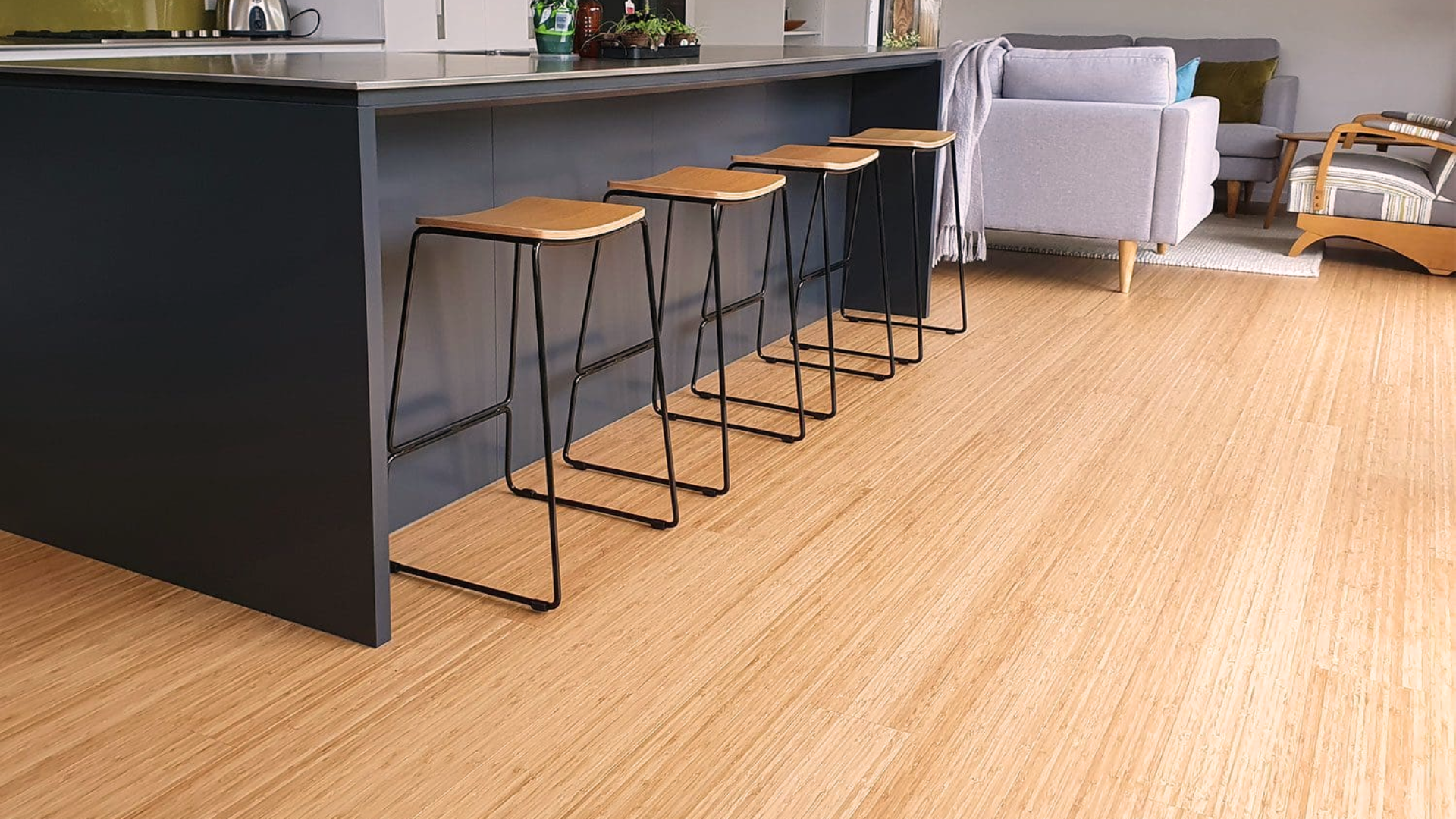
1. Pricey to Install
Let’s be honest about your wallet – wood floors cost more upfront than many other options.
I’ve found that you might pay around $8-15 per square foot for good quality wood flooring, plus installation costs.
This can add up fast in larger rooms. If you’re on a tight budget, this initial cost might be a big hurdle.
The good news? The long-term value often makes up for it, but you need cash now to enjoy those benefits later.
2. Scratches and Dents Happen
Wood floors look great until… they don’t. Your dog’s claws, your child’s toys, or moving furniture can all leave marks.
I still remember the first big scratch on my new wood floor – it hurt my heart a bit!
High heels, heavy items that get dropped, and even sand tracked in from outside can damage the surface.
While some people like this “lived-in” look, others find these imperfections frustrating.
3. Not Great with Moisture
Water is the enemy of wood floors. I learned this the hard way when my dishwasher leaked. Wood can warp, swell, or stain when it gets wet.
This makes bathrooms, kitchens, and basements risky spots for wood flooring.
Spills need quick cleanup, and you should never wet-mop these floors.
In humid areas, you might even need special care to prevent moisture damage from the air itself.
4. Needs Regular Maintenance
Wood floors aren’t a “set it and forget it” option. They need regular sweeping and proper cleaning with wood-safe products.
Every 5-10 years, most wood floors need sanding and refinishing to keep looking good.
You might also notice that your floors change slightly with the seasons – small gaps can appear in winter when the air is dry, then close up in summer humidity.
This natural movement is normal but takes some getting used to.
Installation and Maintenance Considerations
Putting in hardwood floors needs careful planning. Before buying, think about who will install your floors.
Professional installation costs extra money, but they have the right tools and know-how to do the job correctly.
1. DIY or Hire a Pro?
I’ve tried both routes, and trust me, laying wood floors is harder than it looks on TV. You’ll need special tools like a flooring nailer, saw, and knee pads.
The biggest DIY mistakes happen with measuring and leaving proper space for the wood to expand.
If you’ve never tackled a big floor project before, you might want to hire a pro.
It costs more upfront but saves you headaches and possibly money on wasted materials. For small, simple rooms, a weekend warrior with patience might manage fine.
2. Subfloor and Acclimation Matters
The floor beneath your feet makes all the difference. I learned this when my first wood floor started to squeak; turns out the subfloor wasn’t level.
Your subfloor must be clean, dry, and flat before installation begins.
Also, wood needs time to get used to your home. You should place the wood in your house for 3-7 days before installation.
This helps prevent gaps, buckling, and other problems later. This step seems small, but skipping it can ruin your whole project.
3. Ongoing Care Tips
Keeping wood floors nice isn’t hard, but it does take regular attention. Sweep or vacuum (with a floor attachment) a few times weekly to remove grit that scratches.
I use a barely damp mop with cleaner made for wood floors once a month. Never use steam or wet mops; they’ll damage your floor over time.
Place felt pads under furniture legs and pick up, don’t drag, heavy items. In sunny rooms, use curtains during peak hours, as UV rays can fade wood over the years.
For spills, wipe them up right away with a dry or slightly damp cloth.
Best Rooms for Hardwood Flooring
Picking the right flooring for your home matters a lot. Wood floors add value and beauty to homes, but they work better in some rooms than others.
I’ll tell you what makes wood floors a smart pick for certain spaces, and which rooms might need different options.
1. Living Rooms
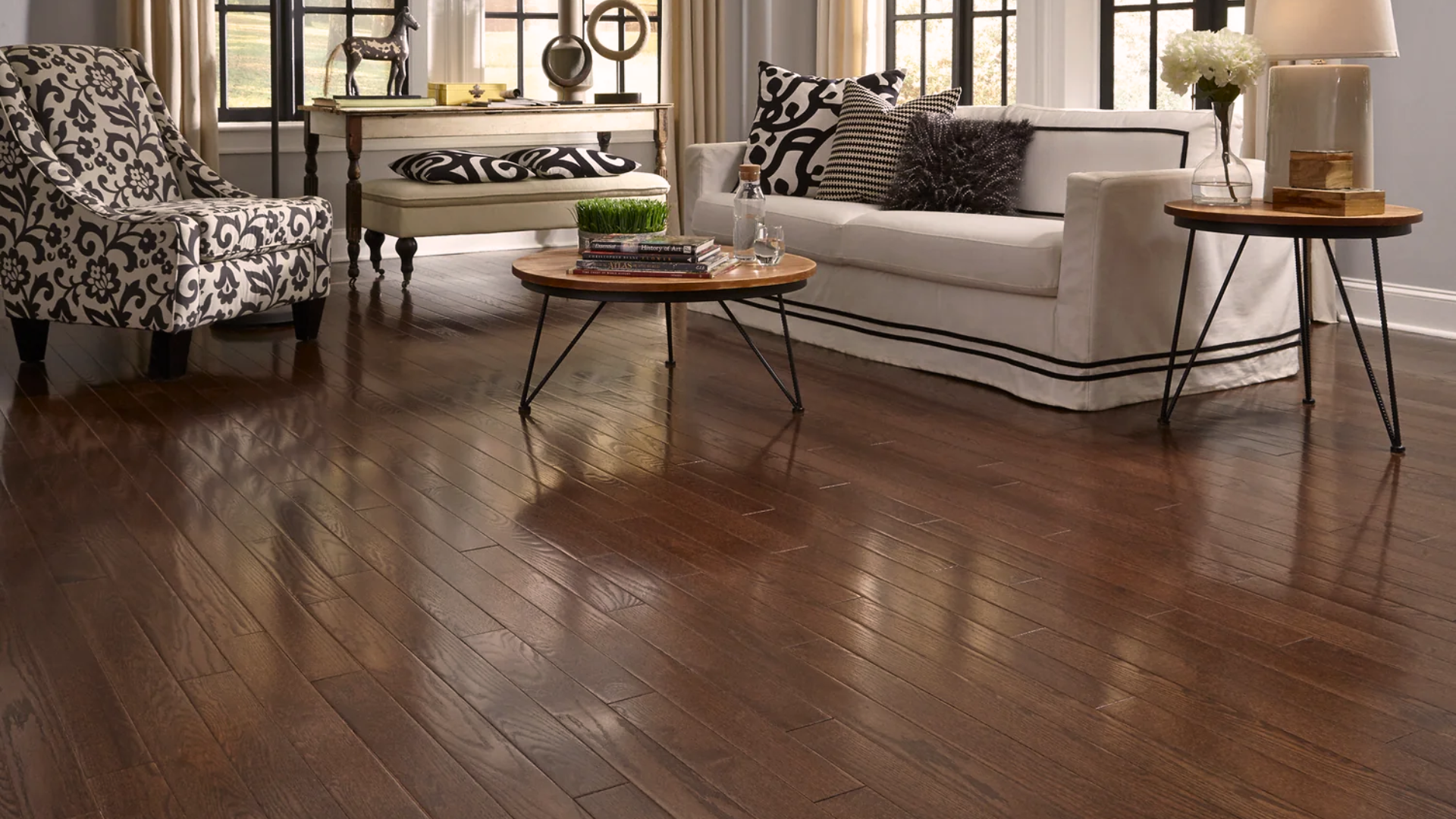
The living room is where I think wood floors truly shine. These rooms see lots of foot traffic but not much water, making them perfect spots for wood.
Your living room floors become the base for your entire home’s style.
Since this is where you spend much of your time, the warmth and comfort of wood can make the space feel more welcoming.
Wood floors also help cut down on noise between rooms, which is handy when someone wants to watch TV while others sleep.
2. Dining Rooms
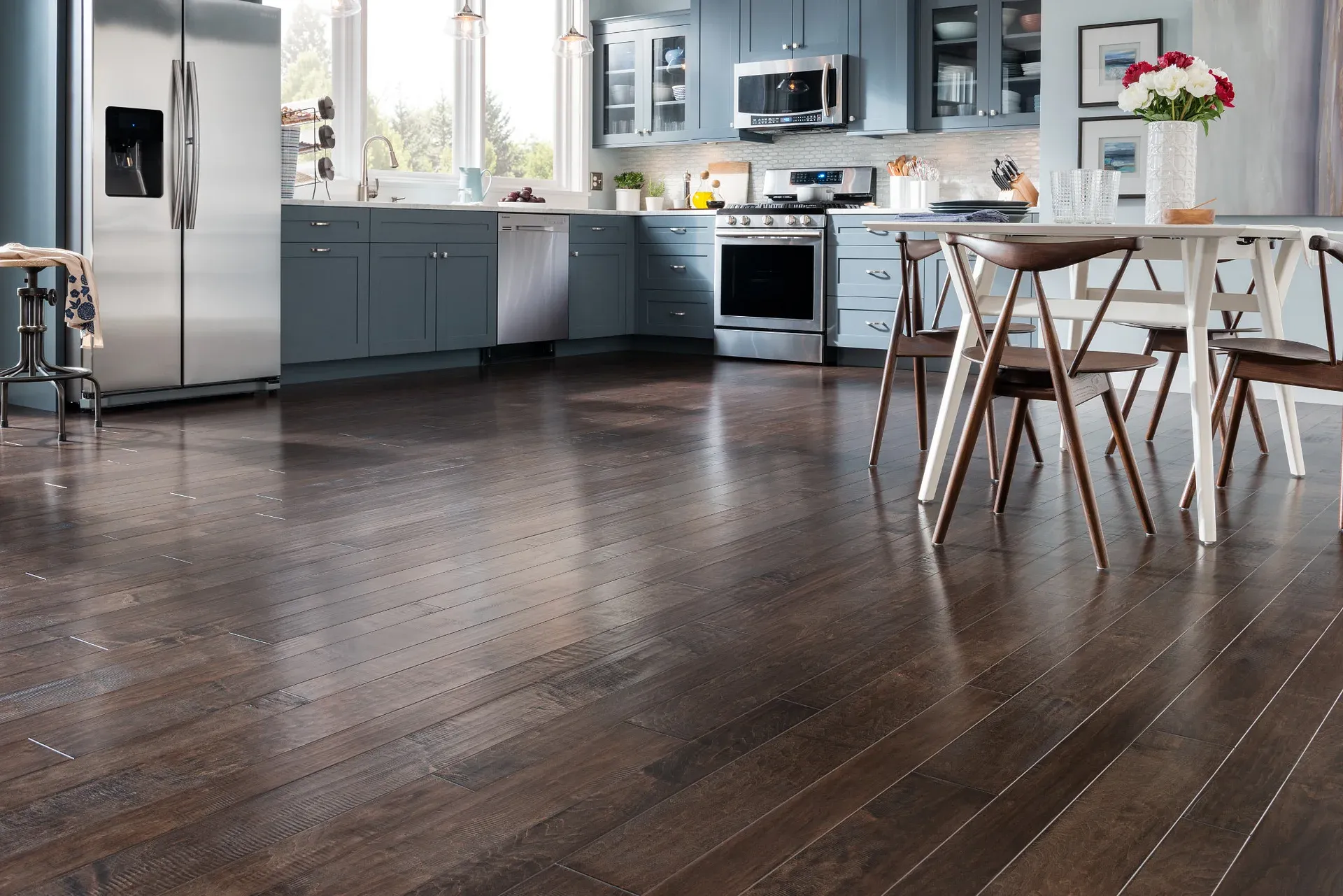
I’ve found dining rooms to be great places for wood floors.
They add a touch of class to meal times and stand up well to chair movement. Just be careful with spills during big family dinners!
You might want to put a rug under your table to catch food drops and protect the wood. Plus, cleanup is much easier than with carpet when those inevitable spills happen.
A quick wipe, and you’re back to a clean floor.
3. Bedrooms
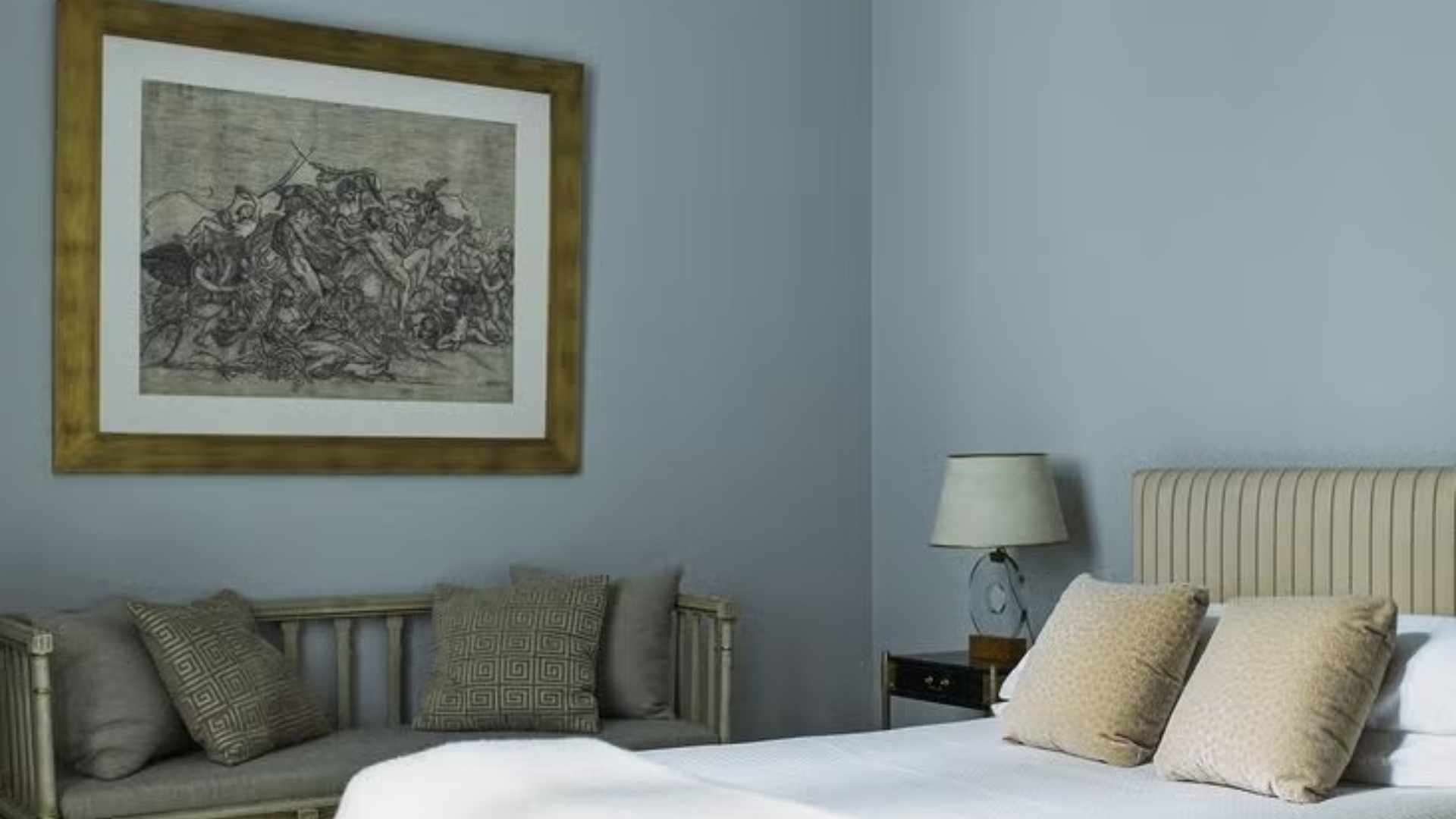
For a cozy sleep space, wood floors offer both beauty and health benefits. I sleep better knowing my bedroom floor isn’t trapping dust and allergens like carpet can.
In bedrooms, you’ll deal with less wear and tear than in main living areas. The natural warmth of wood helps create a calm, restful room.
Add a soft rug beside the bed for comfort when you first wake up, and you’ll have the best of both worlds.
4. Home Offices
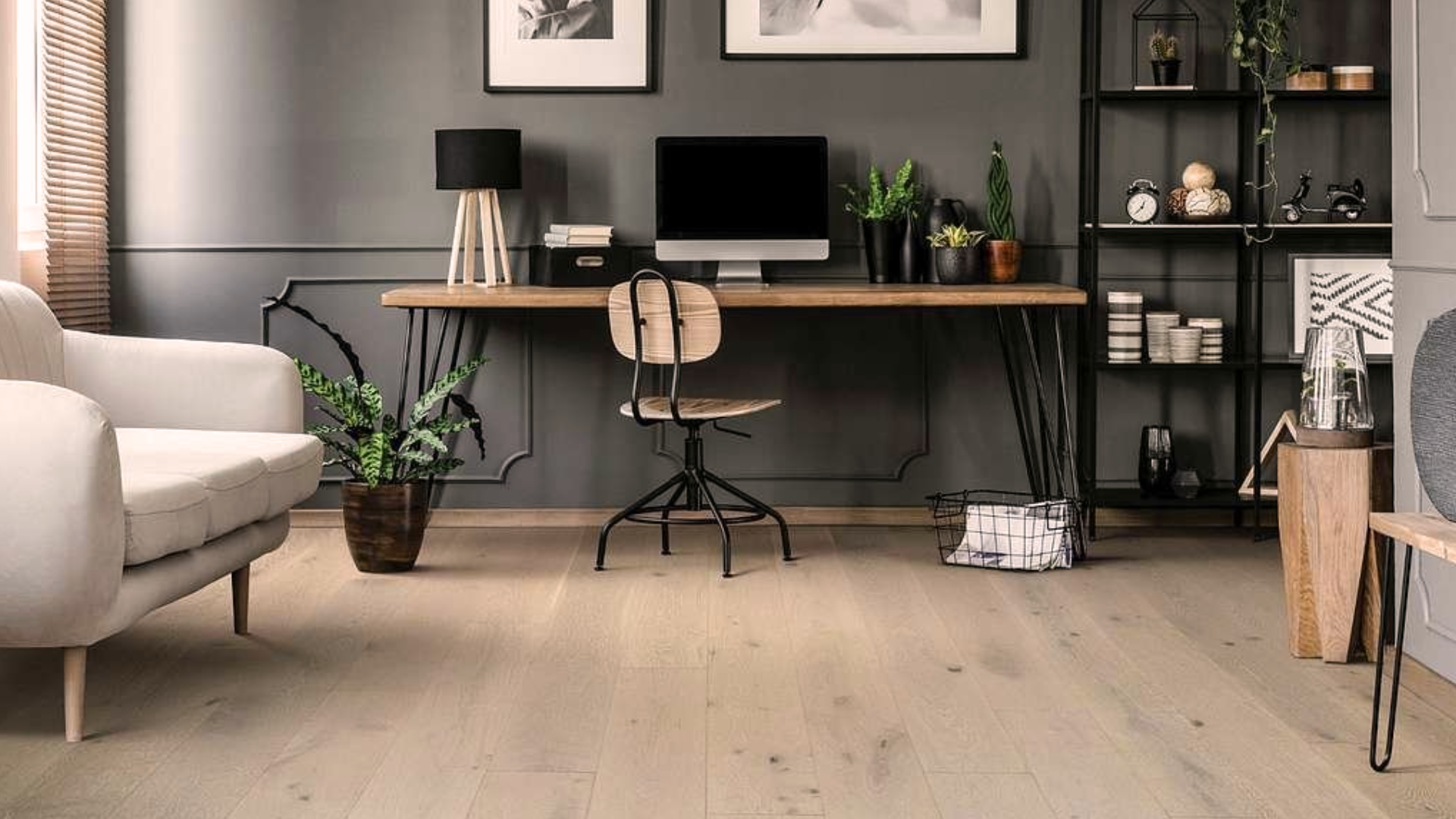
With more people working from home, office spaces need to be both practical and nice to look at.
Wood floors work well here because chair wheels can roll easily (use a plastic mat to prevent scratches).
The clean, crisp look also helps create a focused work setting. I find that wood floors in my office help me stay on task better than carpet, which can feel too casual or cozy for work time.
Other Flooring Options: Engineered Wood vs. Laminate
| Feature | Engineered Wood | Laminate |
|---|---|---|
| What is it made of | Real wood top layer with plywood or fiberboard base | A photo layer that looks like wood on a fiberboard base |
| Look and feel | Very close to solid wood with real wood grain | It can look good, but it feels less natural underfoot |
| Lifespan | 20-30 years | 10-20 years |
| Water resistance | Better than solid wood, but not waterproof | Good water resistance, but seams can let water in |
| Can it be refinished? | Yes, but only 1-2 times | No, it must be replaced when worn |
| Installation ease | Medium – click-lock or glue-down | Easy – often click-lock, floats over subfloor |
| Heat tolerance | Works with radiant heating | Often works with radiant heating |
| Best for | People who want real wood with better moisture handling | Budget-focused folks, rental properties, and busy homes |
| Not ideal for | Very wet areas like bathrooms | Homes where you want the longest-lasting option |
Which fits your life best? I suggest engineered wood if you want the real wood look and feel with a bit more stability. My sister put it in her basement, where solid wood would warp.
Laminate makes sense if you have kids, pets, or need to watch your budget. I used it in my rental property, and it’s held up well for years.
Your daily life should drive this choice more than just looks.
Conclusion
Wood floors have a special beauty that stays fresh year after year. I love how they warm up a room and create a solid base for any style.
But they’re not the right fit for every home or room.
You now know the full story, both the good and the not-so-good sides. Wood floors cost more upfront and need care, but they last for decades and can boost your home’s value.
Think about your daily life when deciding. Do you have active kids or pets? Is your budget tight right now? How much time can you spend on upkeep?
In the end, the best floor is the one that works for your real life, not just what looks good in photos.
Trust your gut feeling about what makes sense for your home, your budget, and how you live each day.

